

Addressing the Agriculture-Energy-Water-Climate Change Nexus: Conference Synthesis
August 20, 2019
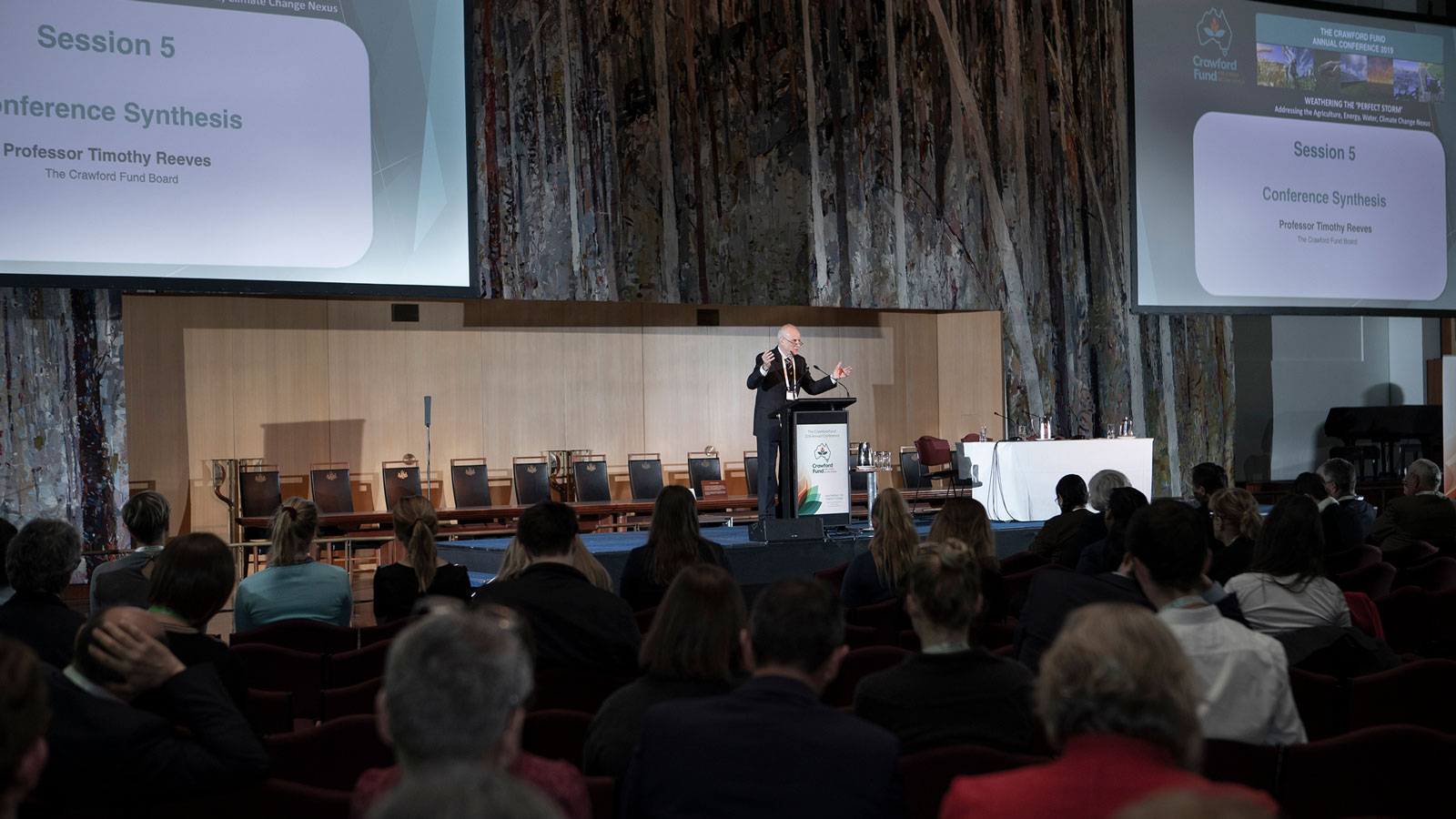
CONFERENCE SYNTHESIS
Professor Timothy Reeves FTSE, Crawford Fund Board Member
Professor in Residence, Dookie Campus, University of Melbourne
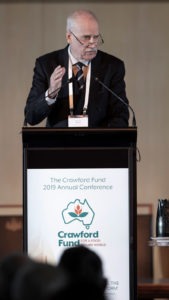
In summarizing the key messages arising from this conference it would be remiss of me not to start with the wonderful Sir John Crawford Memorial Address delivered last night by Professor Ross Garnaut AC. Where he so clearly described the nexus opportunity that is there for the grasping, between productive, profitable and sustainable farms delivering high quality products to enhance food and nutritional security and at the same time sequestering carbon in our depleted soils. This would not only help to reduce greenhouse gas (GHG) emissions, but also to restore soil health across our farming landscapes – a national and global revolution with regional and rural Australia at its centre. A stimulating and optimistic manifesto! His only doubt about achieving this nexus opportunity – a recurring theme throughout the meeting – was whether we as a nation can seize this great opportunity? Doing so, should be the first action item arising from this conference and we may as a result, even have to tweak one of our iconic lines to ‘Beneath the Eucalypt we stand, a sprig of Mallee in our hand’!
Today at the conference we have also been treated to some wonderful and stimulating addresses with clear messages about the challenges and great opportunities of nexus thinking and actions.
Professor Sir Charles Godfray declared ‘it’s game on!’ Charles eloquently and forcefully outlined the need for a new revolution in agriculture of the same magnitude as the Industrial and Green Revolutions, that would not only boost productivity but also radically improve resource-use efficiency and sustainability. He stated that we needed to reduce waste, and for me (TGR) the fact that globally we waste around 30% of total food production is not just an enigma, it is in many instances a disgrace as I believe that in the Western world, we have lost our respect for food and treat it as a cheap commodity, whereas in the developing world there is still great respect for food. Charles said that we also need to make hard decisions about diets and consumption patterns. He called for globalization of our food systems to provide both public and private benefits and for me (TGR) this not only means free trade in safe, nutritious food products, but also in the knowledge of how to produce it sustainably – the business of ACIAR and its wonderful partners. Charles firmly believes that these ambitious goals are attainable, but only if we understand the risks and the challenges and build the political will to act. The modelling being conducted in the Oxford Martin School which he described, is just what is required – being able to ask and answer the questions of what would the outcomes be if ‘We all ate healthily?’ or ‘Can we feed the world within planetary boundaries?’. What keeps Charles awake at night? – the huge differences in the proportion of incomes spent on food between developed and developing country families; the rise and rise of mega-cities where more and more people are waiting for their food to be delivered, but with less and less people out in the rural areas producing that food; food riots; and overall the situation of food and nutritional security in many parts of Africa.
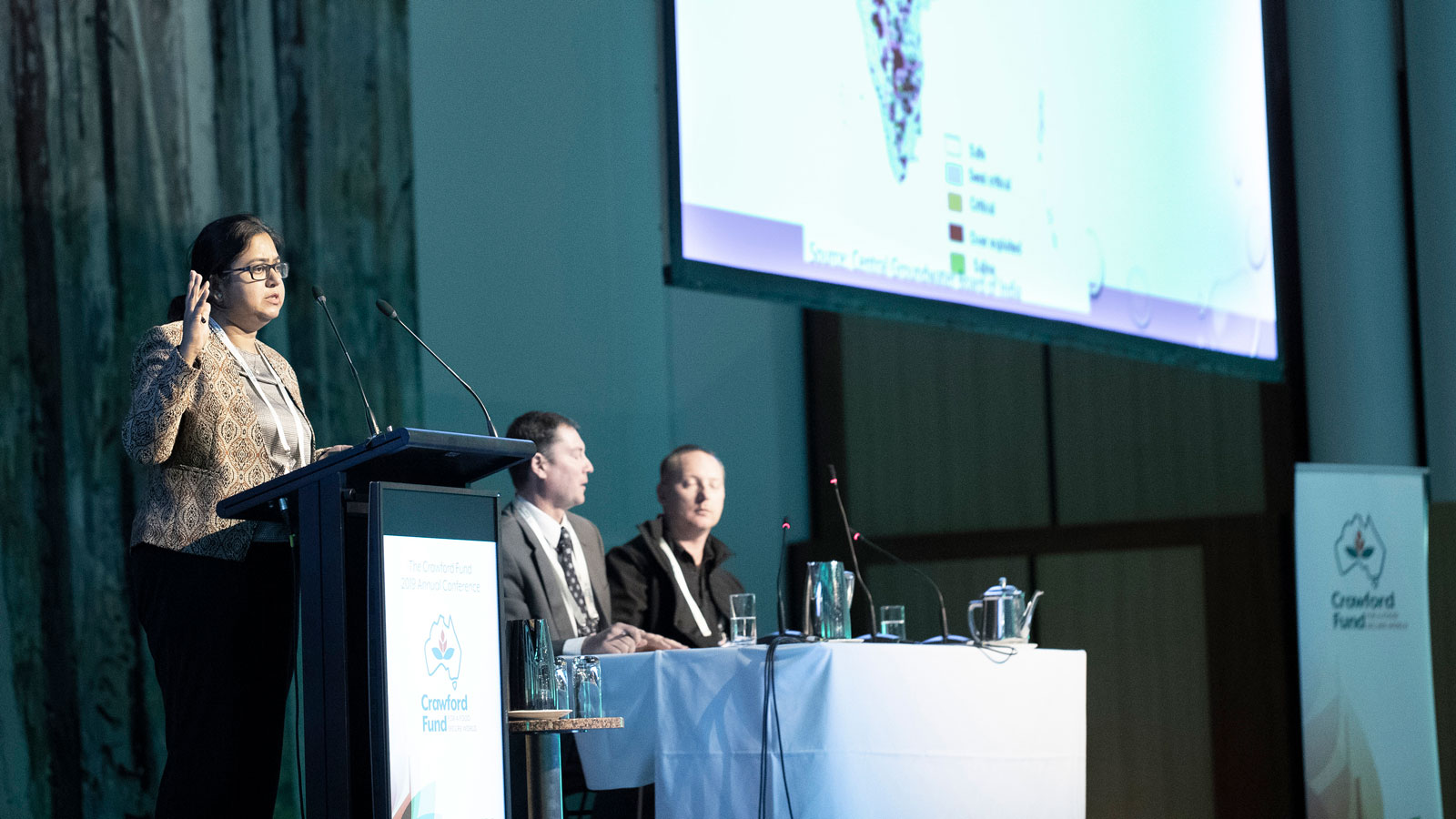
Our next session was entitled ‘Weathering and Halting the Perfect Storm and the excellent keynote address was delivered by Dr Bruce Campbell, leader of the CGIAR CCAFS Program. Bruce treated us to a stimulating talk with the three components – ‘Malthusian pessimism’; inspirational stories of achievements to date; and perhaps most importantly of how we need to do things differently if we are to stimulate the actions necessary to achieve urgently required actions in the future. He strikingly reminded us that ‘we only have eleven growing seasons to achieve the Sustainable Development Goals’…. For me, there were many important messages but the most important may be the changes in the CCAFS partnership paradigms and modalities that he very clearly described. Firstly, the greater emphasis on the strength of the partnership – ‘if you are not clearly committed to change, then we may not want to work with you’ and secondly the urgent need for a new and much more participatory and circular partnership system to achieve food system transformation. Bruce illustrated this well with his ‘Fostering enabling policy and institutions’ slide.
Bruce’s excellent presentation was immediately followed by a great example of such a new modality in the excellent and clear presentation from Professor Alice Joan Ferrer where she described the success of the Climate Smart Villages initiative with its participatory local inputs into the ways forward. This was followed by the very good presentation of Dr Di Mayberry, CSIRO who picked up a theme introduced earlier by Charles, of reducing GHG emissions from red meat production in Australia and developing countries through better land management, input-use efficiency and carbon sequestration. It however also raised the question from the floor of whether better sustainability outcomes could be achieved, if the land was destocked and used in a different way, perhaps for re-forestation where potentially there are 58m hectares potentially available? Dr John Angus also from the floor, was concerned of the social consequences from such decisions which were primarily aimed at environmental outcomes. To me it is clear that the trade-offs between environmental and social impacts require detailed consideration as it is critical that no one is left behind by such decisions.
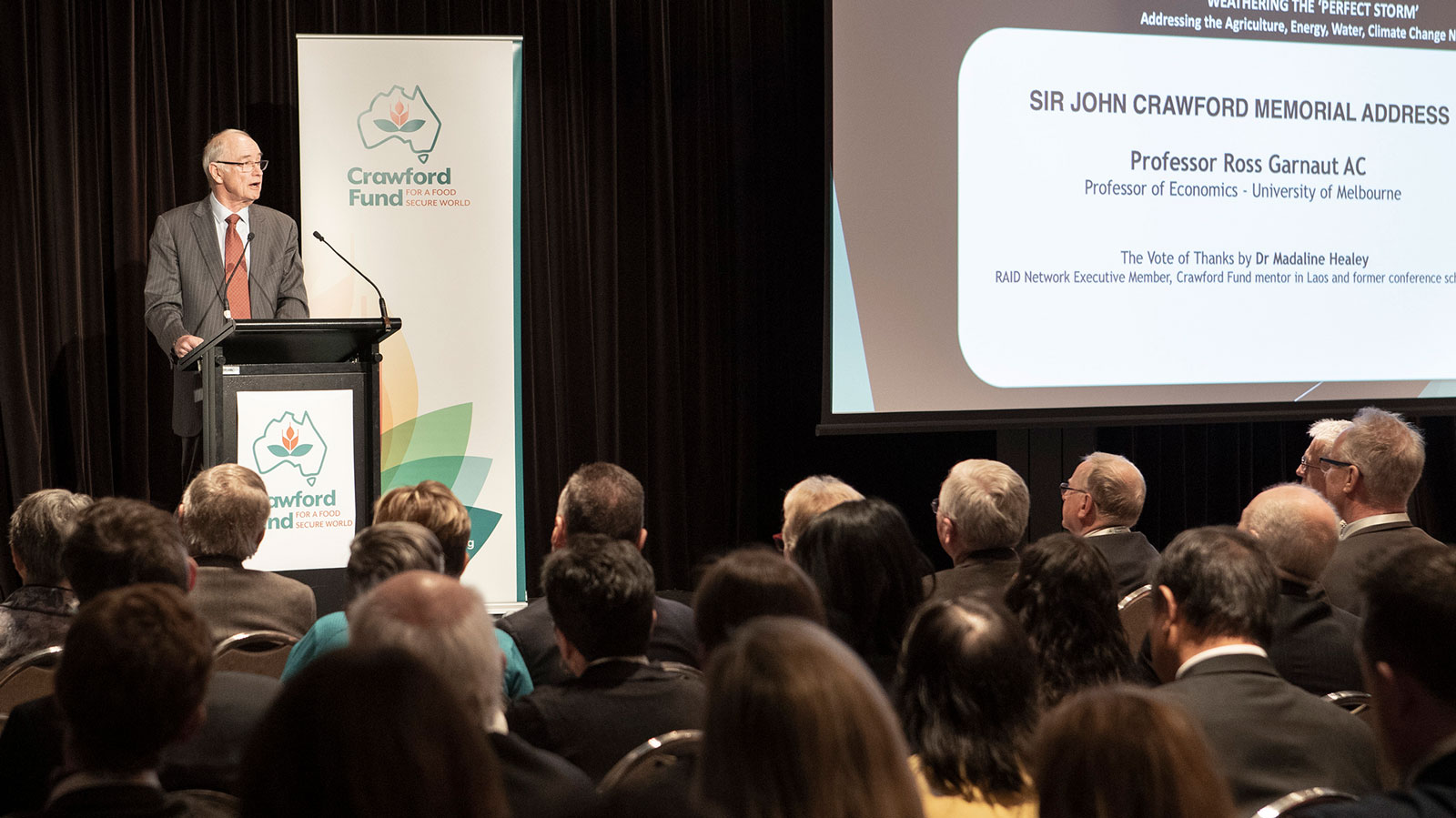
We then moved to the next session of the conference ‘Crops, Drops and Climate Challenge’ which was introduced by the wonderful keynote address of Dr AJ Mathur, Director of the Energy and Resources Institute in India. He talked about using energy efficiency to address the ‘perfect storm’ and reminded us of the unintended consequences of past actions, in this case the ‘Green Revolution’ which had resulted in much greater crop yields, but also much greater water and energy use – the latter for both pumping water from increasingly greater depths as tube wells deplete and also for fertilizer production. It’s been calculated that around one third of the energy required to feed a person in the Western world is actually used for fertilizer production, particularly nitrogen fertilizers. And yet we have a proven and sound alternative way to lift soil nitrogen that does not require huge energy inputs – biological nitrogen fixation by legumes! There has been a demise in the use of legumes in our farming systems and this needs to be rectified as they would not only supply the diversity in diets mentioned by Sarah Barker, but legumes also make economic and environmental sense in sustainable farming systems. A key point of AJ’s presentation was the exciting development of solar powered irrigation pumps that allow farmers the choice of selling the electricity generated or using it to add more water to their crops, thereby providing an alternative to unsustainable pumping of tube wells. It was a very interesting and informative presentation.
Dr Jim Woodhill, DFAT followed and he reminded us that 90% of freshwater in the South Asia is already used for irrigation and that the need to double food production will certainly not arise from increased water usage. The most important point that I took from Jim’s very good presentation was again the need for new approaches to ensure that political innovation, institutional innovation and technical innovation are implemented and the SDIP provides a structured and well organised framework for this to be successfully achieved.
The final presentation in this session was made by Professor Doctor Oudom Phonekhampheng who gave an excellent presentation on a further example of the unintended consequences of actions taken, when he described the impacts of the multiple dams on the Mekong catchment on fish movement. The solutions developed in his work were based on a variety of ‘fish passes’ to facilitate movement for various types of fish.For me the most shocking content of Dr Oudom’s presentation was the plethora of dams on the Mekong already and more alarmingly the number planned or already under construction!
This afternoon the first session was on ‘Circular Food Systems’ and Dr Adit Mukherji’s (IWMI) outstanding presentation emphasised the importance of policy settings. She stated that to address climate change, global policies were critical but for water management more local policies were required. It prompted me to think that we need to modify that old expression to now read ‘Think and act globally and think and act locally’. She pointed out that the nature of the monsoon in South Asia had changed with higher intensities, but of a more sporadic nature and that unsustainable extraction of water continued in the region. She made it clear that ‘brave decisions’ were required around current and future water usage.
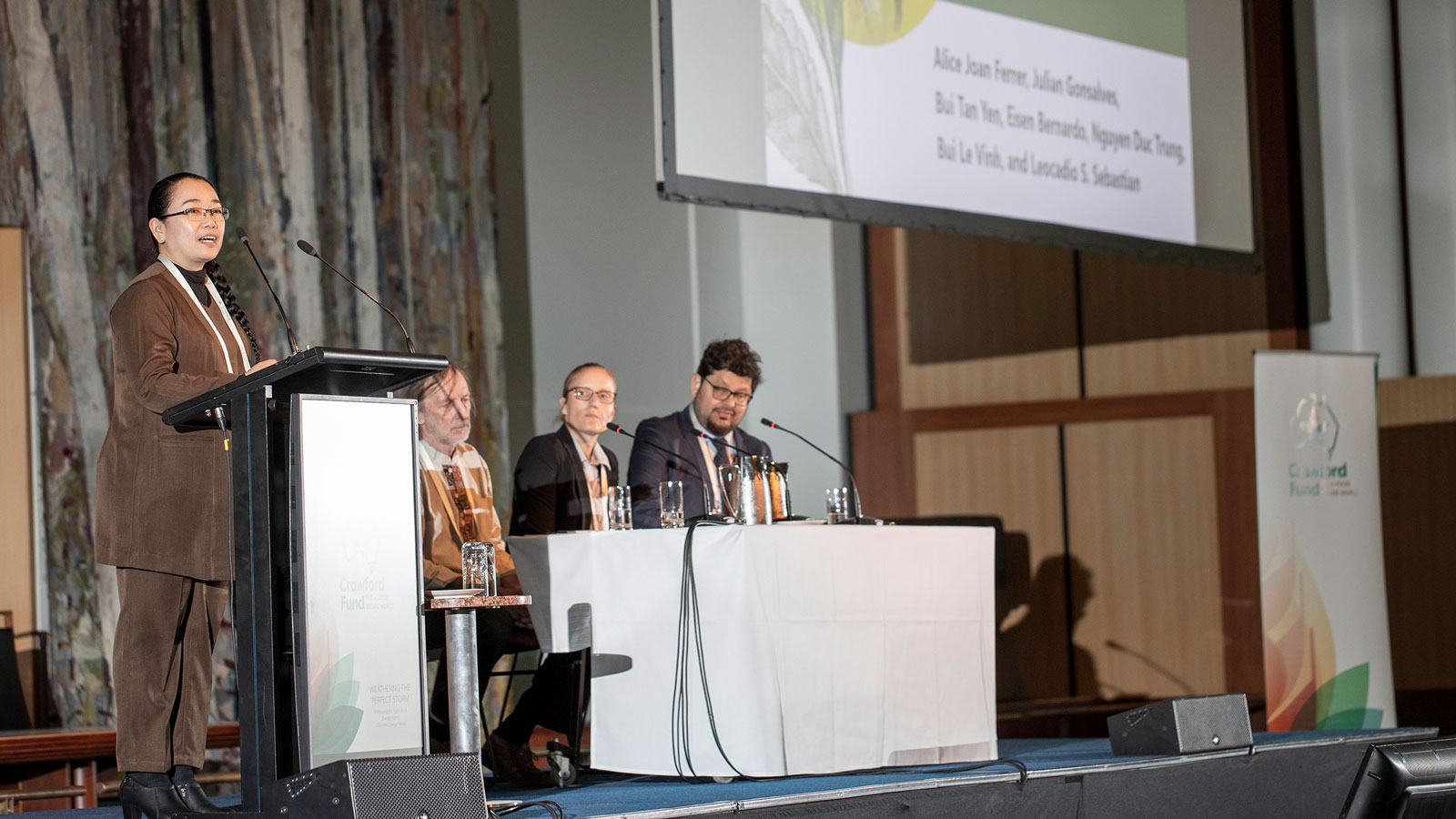
Mark Noyce, CEO of Biofilta then gave us an uplifting and energetic presentation on the exciting developments with water sensitive urban design and sustainability practices including their water-efficient urban food production systems. It was very encouraging not just for Australia but also for developing countries. We were sorry that the planned video link presentation from Angela Manjichi, General Director for Academics and Agriculture, Mozambique was not possible and thank Dr Eric Huttner, ACIAR for taking over at very short notice. For me the SIMLESA project is an excellent example of the sustainably intensified agri-food systems that are urgently required to meet the challenges of global food and nutritional security, and legumes are a significant component of that project.
The last session was presented by Sarah Barker from Minter Ellison and she dramatically described how climate change is already firmly embedded in the financial world as a reality and not something that may happen. She talked about the huge losses already being caused by extreme events and the increasing risks from these in the future and also the impacts of rising sea levels, floods, bushfires and drying, cracking soils (impacts on building foundations). It just emphasised for me that leadership in addressing climate adaptation and other key issues must now come from industry, communities and influential individuals, with the hope that governments will follow up with policy settings that facilitate and provide a supportive policy framework.
So, my conclusions are:
- That food and nutritional security are humankind’s greatest challenge for the coming decades, as global population continues to increase at the rate of around 160 people/minute all of whom must have enough nutritious food to live healthy and productive lives
- That nexus thinking and actions are critical and that now more than ever before; we must consider the agriculture-food-nutrition-human health-planetary health nexus as critical for our decision making
- The overriding message from the conference is optimistic but not with ‘business as usual’ which is no longer a viable option. But as we make the necessary changes, we must ensure that no one is left behind
- A major opportunity is that sustainably intensified farms with more diversity, enhanced soil carbon and nitrogen levels are not only more productive and profitable, but also more climate smart and more resilient to climatic and economic shocks. In other words, all of the elements for better productivity and healthier ecosystems are pulling in the same direction
- The question remains ‘Will we have the political commitment and agility to address and seize these urgent and exciting opportunities?’
- Lastly, but very importantly, we have had many reminders that ‘agricultural sustainability is a moving target’ and that we cannot make the mistake of thinking that the status quo however good it looks will remain sustainable as other factors change
My recommendations are:
- To seize the opportunity to diversify our agricultural systems for carbon sequestration and improved soil health, through the integration of crops, forages, legumes, livestock, shrubs and trees
- To promote the continuing importance of the development of disruptive technologies
- To urgently develop new paradigms to increase the adoption and impacts of beneficial changes in agricultural development with our partners, through such new approaches as outlined in CCAFS and SDIP
- To ensure that we have policy cohesion across the key nexus elements, as it is no longer acceptable nor appropriate to make policy decisions on water, or energy, or agriculture, or climate, or other areas in isolation
- To ensure that we increase our efforts in the sustainable intensification of our agri-food systems in order to ‘produce more with less’, or as a colleague in the UK – Professor John Porter – recently suggested to me, it was perhaps better to change this to ‘produce enough with less’. Thank you and thank you to all of our great speakers!




